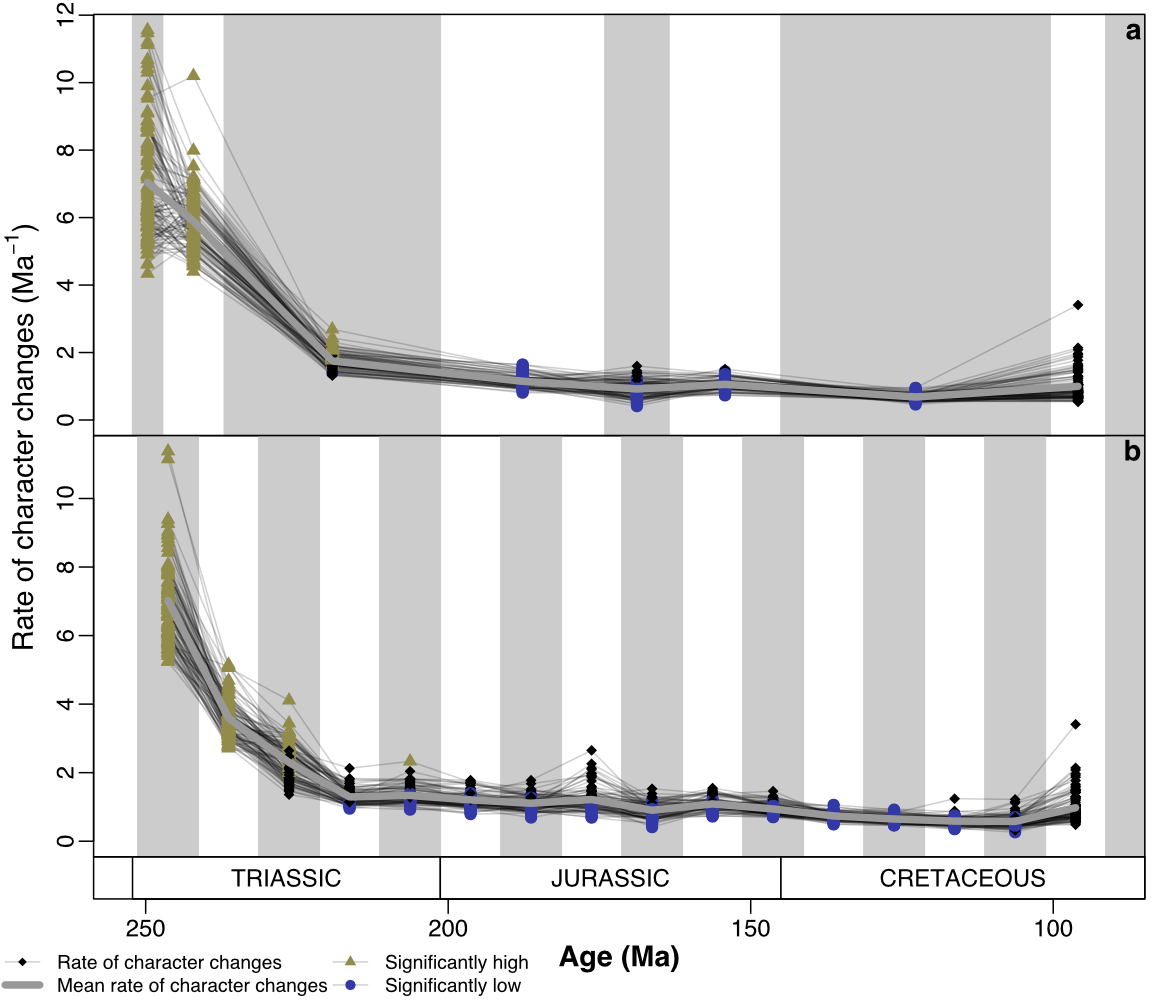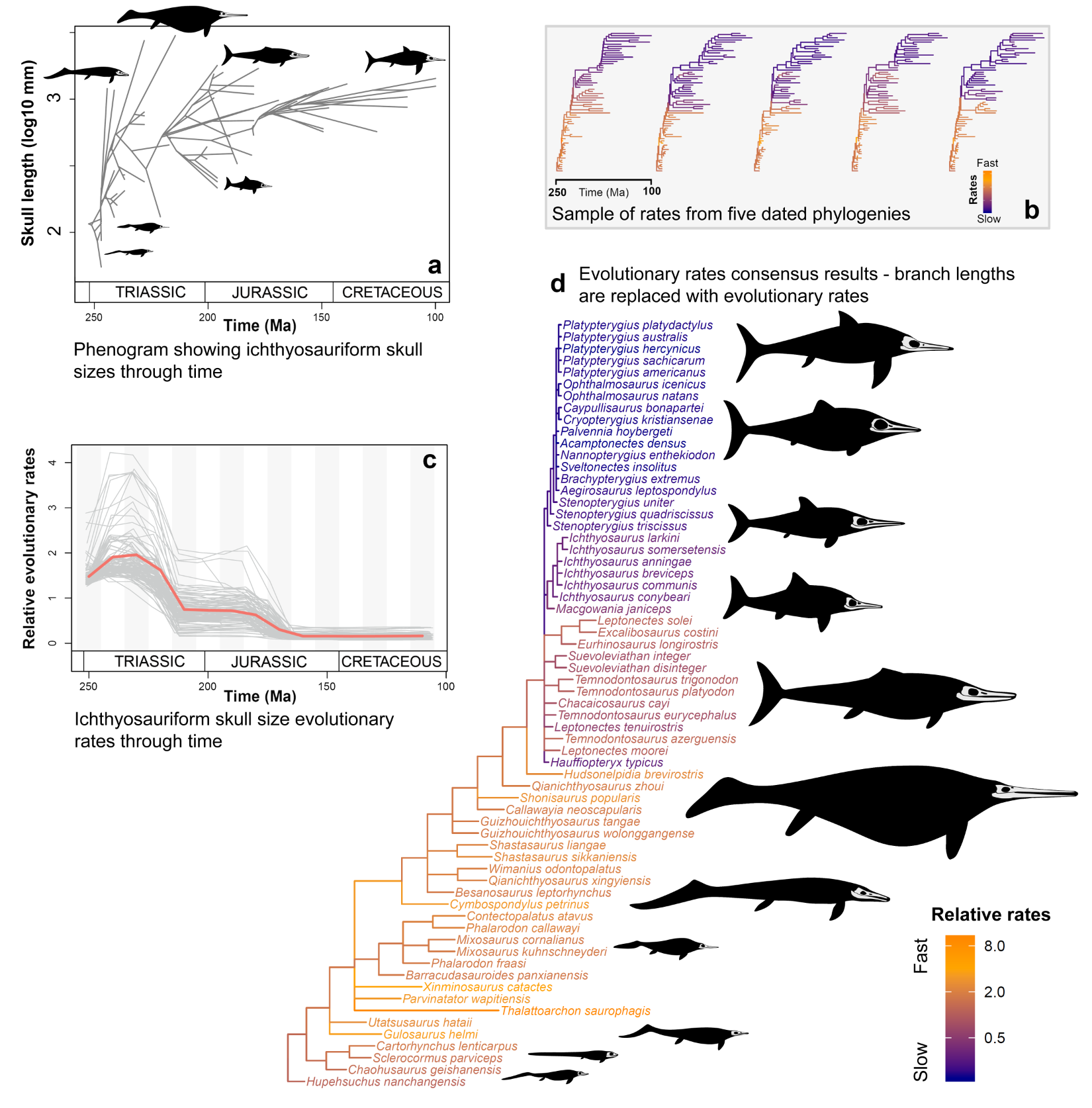Early high rates and disparity in the evolution of ichthyosaurs
Moon, B.C. & Stubbs, T.L. 2020 Early high rates and disparity in the evolution of ichthyosaurs. Communications Biology 3: 68 doi:10.1038/s42003-020-0779-6
Rates of evolution in ichthyosaurs have been considered a few times previously (Fischer et al. 2016, Motani et al. 2017), but not at the level of the whole group and for the 160 million years of their existence. We aimed to combine discrete and continuous characters for all valid ichthyosaur species to examine their evolutionary rates throughout the Mesozoic.
We used cladistic data from a previous phylogeny of ichthyosaurs that I published in 2019 (doi:10.1080/14772019.2017.1394922) and collected additional skull length for 64 ichthyosaur species. Then we put these data through an extensive set of analyses to calculate rates of change from a range of trees produced by Moon (2019).

Ichthyosaurs had an archetypal ‘early burst’ of evolution following their first appearance: high rates of evolution early on in their history. This manifests itself as a rapid diversification in taxonomy, morphology, and ecology during the Early–Middle Triassic followed by relatively slower rates.

The deceleration of evolution seems to be particularly impactful following the bottleneck that ichthyosaurs went through in the latest Triassic. Jurassic and Cretaceous ichthyosaurs were significantly less disparate and evolved less quickly than Triassic species.
We caveat these results because we used only valid taxon referrals, and so did not incorporate the portly preserved remains of the Rhaetian that have recently been reported (Fischer et al. 2014; Lomax et al. 2018), or the ecological variety of the Cretaceous (Fischer et al. 2016). However, we suggest our results are robust as we did not focus solely on ecology, and also included a selection of tree topologies and dating methods, attempting to remove the effects of fossil record uncertainty and find a representative range of evolutionary rates.
